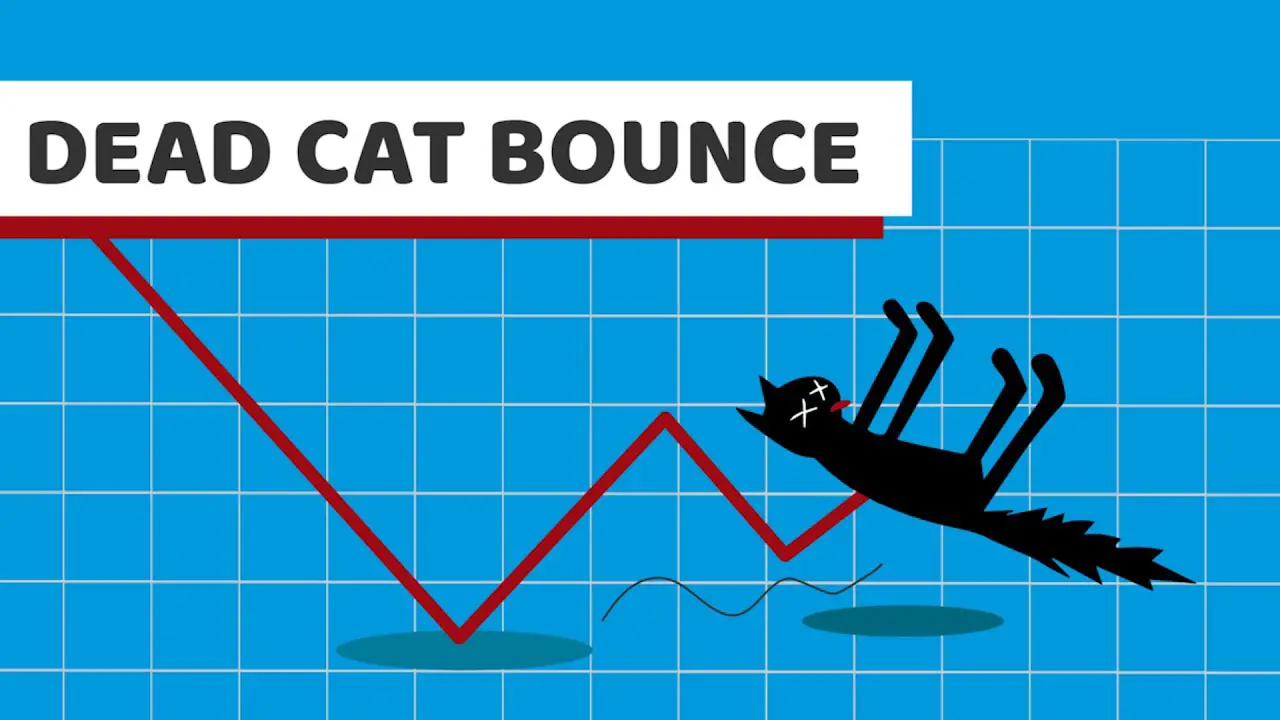A dead cat bounce is a brief, short-term rebound of asset prices following a lengthy drop or bear market, which is followed by the downtrend continuing. Downtrends are sometimes broken by brief episodes of recovery—or minor rallies—during which prices momentarily climb.
The term refers to the idea that even a dead cat will bounce if it falls far enough and quickly enough. It exemplifies a sucker's rally.
What does it indicate?
It is a pricing pattern that can be identified with technical analysis. It is a continuation pattern in which the rebound appears to be a reversal of the dominant trend at first. However, it is immediately followed by a continuation of the downward price move. After the price falls below its previous low, it becomes a dead cat bounce, rather than a reversal.
Downtrends are sometimes interrupted by brief periods of recovery or minor rallies in which prices momentarily rise. This might be due to traders or investors closing out short positions or buying on the premise that the market has reached a bottom.
A dead cat bounce is a pricing pattern that is generally identified after the fact. The reality is that this pricing pattern can only be perceived as such in retrospect. It is nearly impossible to determine whether it is a short-term rebound, or if a new rally is just starting.
Analysts may use technical and fundamental analysis methods to estimate how long will the rebound last. A dead cat bounce can occur both on the overall market, and be driven by a recession. It may also occur in the price of a single security or a group of them, that are related in one way or another. These securities might be related to the same industry or the same geographic location for example.
How to profit from dead cat bounces?
Short-term traders will often try to profit from the rebound. Either by going long or short. Some traders and investors may see the momentary reversal as an opportunity to enter a short position.
Detecting a dead cat bounce ahead of time, like identifying a market top is tough. Even for experienced investors. In March 2009, for example, New York University economist Nouriel Roubini referred to the nascent stock market rebound as a "dead cat bounce". Predicting that the market would quickly reverse direction and plunge to new lows. Instead, March 2009 marked the start of a long bull market that finally surpassed the pre-recession peak. This shows how difficult it is to correctly identify this pattern.
An example
A clear example of a dead cat bounce is related to Cisco Systems (CSCO) during the 2000’s stock mania. In March 2000, Cisco stock peaked at $82 per share before plummeting to $15.81 in March 2001 when the dot-com bubble burst. During that period the stock experienced several dead cat bounces before it finally reached the $15.81 low. In November 2001, the stock had rebounded to $20.44.
It would later sink to $10.48 by September 2002. Today the stock is trading at around $55, and it still has not returned to its previous all-time high. Cisco’s stock performance during the early 2000s displays the mania towards tech stocks during that time. Cisco is a poster child of the dot com bubble and shows how irrational exuberance can influence stock prices and financial markets.
The impossibility of identifying a dead cat bounce
As previously said, most dead cat bounces are only discovered after the event. In retrospect, it is easy to determine whether the rebound was a dead cat bounce. However, when faced with it, it becomes very difficult to determine what will happen. This implies that traders who detect a rally following a sharp fall may mistake it for a dead cat bounce when, in fact, it is a trend reversal suggesting a lengthy upswing.
How can investors tell if the current uptrend is a dead cat bounce or a market reversal? We could make a lot of money if we could always answer this properly. The truth is that there is no easy formula for determining a market bottom.
Image source: Youtube

